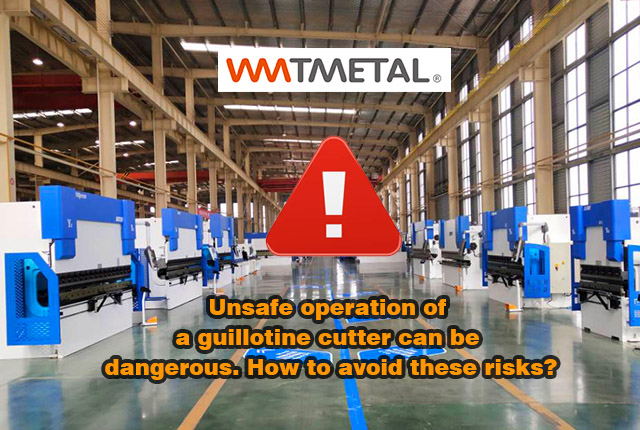WMT CNC Industrial Co., Ltd | All Rights Reserved.Design & Developed by VW Themes

A guillotine cutter is a machine that utilizes a reciprocating linear motion between two blades to shear metal sheets. It consists of a moving upper blade and a fixed lower blade, with an optimal blade gap set to apply shearing force to metal sheets of various thicknesses, resulting in the desired size separation of the sheets. After shearing, it is important to ensure that the sheared surface of the metal sheet meets the requirements of straightness and parallelism while minimizing sheet distortion. The worktable is equipped with material support balls to prevent scratching of the sheet during sliding. The backgauge is used for sheet positioning, and its position is adjusted by a motor. The pressure cylinder is employed to hold down the sheet during cutting to prevent it from moving. Safety guards are installed as protective devices to prevent occupational accidents. The return stroke is typically powered by nitrogen gas, providing high speed and low impact.
Before operation, wear tight-fitting protective clothing with fastened cuffs. The upper garment should not be loose, and it is prohibited to change clothes or wrap fabric around the body near the running machine to prevent entanglement and injury. Wear a safety helmet, and tuck long hair inside the hat. Avoid wearing skirts or sandals.
Operators should be familiar with the main structure, performance, and operating methods of the guillotine cutter. It is a type of forging machinery primarily used in the metal processing industry. The product finds wide applications in various industries such as light industry, metallurgy, chemical, construction, shipbuilding, automotive, power, electrical appliances, and decoration, providing the required machinery and complete sets of equipment.